Six Mile Cypress Slough Preserve, Fort Myers
I’ve been coming to the Fort Myers area for almost forty years and I thought I had visited pretty well all the major wildlife viewing areas and parks in Lee County and most of Southwest Florida. Until today that is, when I found one almost right next door to where we are staying. I’d passed the signs for Six Mile Cypress Slough Preserve, which I’ll just call Six Mile Cypress, many times on the way from SW Florida Airport to Sanibel and for some reason it never dawned on me to check it out. I blame it on the fact that where I grew up a slough (pronounced slew, not sluff) was nothing more than a glorified ditch. Anyway that was my loss and my fault for not being more curious.
Anyway, Alison and I are spending the month of April in a house in the Pelican Preserve community of Fort Myers not far from the airport. Aside from the fact that no self-respecting pelican would be caught anywhere near this place, it’s pretty nice. We’ve been doing a lot of biking and yesterday we were on Six Mile Cypress Parkway when we drove by the entrance to Six Mile Cypress and decided to drop in. The first thing I noticed was the large interpretive centre and the second was the entrance to a boardwalk that was listed as being over a mile long. The map of the boardwalk showed thee distinct ponds and a small lake. A nearby bulletin board listed a great number of birds, reptiles and butterflies that had been seen recently from the boardwalk. That definitely piqued my interest and we decided to return the next day at 9:30 for the daily guided tour. Also I wanted to try out a new telephoto lens I had brought down with me from Nova Scotia for just such situations.
Six Mile Cypress
So here we are the next morning on time, but too late. The guided tours are limited to ten people (even though the website says 20) and they already have that number. Then I notice that they all have to wear ‘Guided Tour’ badges like they are little kids who might get lost at the zoo. Glad we didn’t make it in time. You’ve heard Aesop’s fable about the fox and the grapes – well that describes me to a T. Luckily the organization that maintains the place has a free detailed brochure that you can borrow for the duration of the walk and that should replace a real guide. Before heading out I should tell you that entrance to Six Mile Cypress, including the boardwalk and the interpretive centre, is absolutely free. There a modest $1.00 an hour parking fee for cars. Contrast that to the $14.00 admission fee to Corkscrew Swamp Sanctuary. Admittedly Corkscrew is the gold standard by which all other SW Florida wildlife preserves are measured, but it’s nice to see that through the effort of volunteers, this place can operate without admission fees.
Six Mile Cypress is, surprise, mostly a cypress swamp and more particularly, a bald cypress swamp. What’s the difference between a bald cypress and the other trees we usually called cypresses and associate with places like the landscape of Tuscany? Just about everything. Bald cypress are actually deciduous trees that drop their needles in the fall like tamaracks and thus go bald for the winter. Italian cypress are conifers that like Italian men, think they look good at all times.
Here is the Italian cypress. He’s a good boy who can be manicured and made to behave, unlike some Italian men.
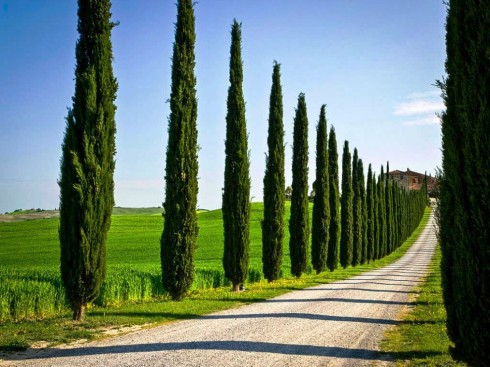
And here’s the bald cypress during his hairy season. He cannot be tamed and is wild in every way.
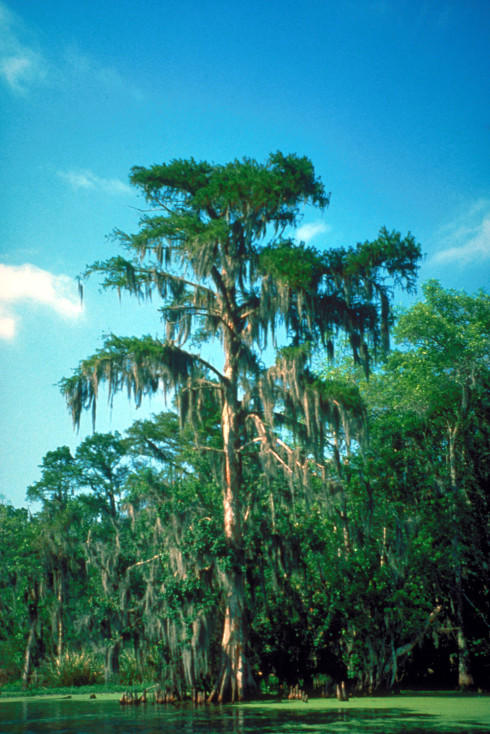
The thing about bald cypress is that they love to get their feet wet and the swamps they live in are among the most prolific ecosystems in the world, particularly for orchids, butterflies, turtles and of course, poisonous snakes and alligators. I love visiting them, so let’s get this show on the road.
The first stop is Gator Pond which I can hear the guide tell the ‘Blue Birds’ which this day’s group has been christened as, that this used to be called Diesel Lake because of how many old cars and trucks were disposed of here. There are remnants of two old swimming rafts on the pond which are now the property of cormorants. Across the way I can clearly see a Great Egret rookery and I prepare to set up the tripod and telephoto and get to work. However, anyone familiar with my manual dexterity will know that this is easier said than done. There are no less than sixteen separate adjustments that you need to get just right in order to get camera, lens and tripod working as a team. By the time I’m ready the Blue Birds have left us in their dust. Good thing too, because I doubt they’ve heard language like this since they were in their seventies.
I’m finally ready and actually look like I know what I’m doing.
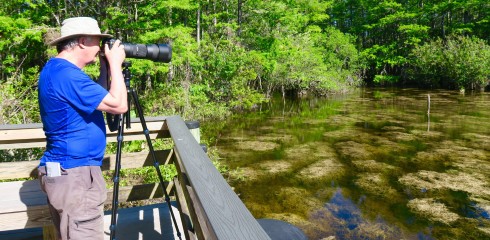
This is a portion of the rookery where there seems to be one nest to a tree. The males choose an appropriate nesting area and when he attracts a female they jointly build the nest and look after the chicks when they hatch. Sounds like one big happy family right? While the parents might get along, the kids often don’t and the oldest one often murders the younger ones which is called siblicide.
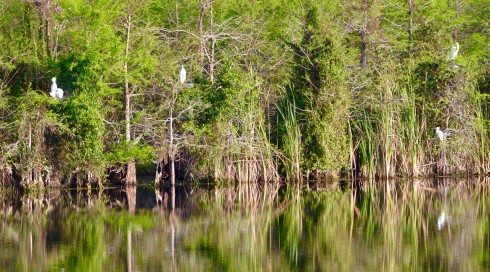
That does not appear to have happened at this nest where one parent seems to be showing the two chicks the importance of preening.
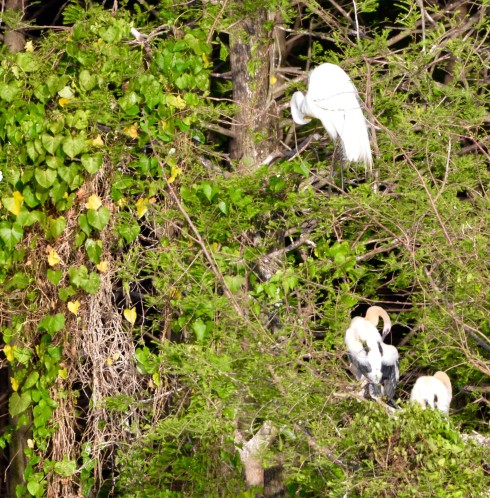
The bald cypress is one of the oldest types of trees in the world, having been around for over 150 million years and it has some pretty impressive relatives – the giant redwood and the sequoia. Despite these ancient roots (pun intended) the bald cypress has a very modern problem, and that’s probably not the right word – it’s transgendered. It has both male and female sex organs (which in the plant world are called flowers) and it has sex with itself. Unlike humans who do this, the bald cypress does produce offspring (which in the plant world are called seeds). So as we are walking through this forest of bald cypress I am thinking that we are in the middle of an arboreal sexcapade that would make Caligula blush.
Bald cypress also have something else that is unique to the species – they have knees. Here’s what one looks like.
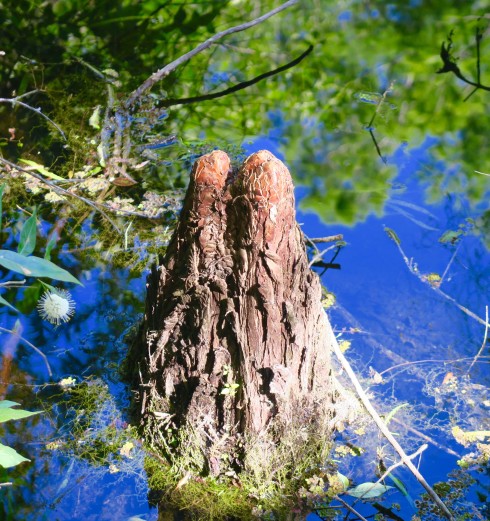
They grow up from the roots of the tree and contrary to what you might think, they don’t grow into new trees. Scientists still have no idea why they exist or what use they are to the tree. That may be the case, but they are very useful to us for making clocks.

While I’m in this reverie about the secret life of the bald cypress we arrive at the second viewing station at Wood Duck Pond where the Blue Birds are now stationed. They are now in a semi-heated debate whether or not something that looks to me like a log across the pond is an alligator or not. They are all so transfixed that they don’t even notice a real alligator swimming by ten times closer than the log they are looking at. I’m always amazed at people’s reactions to seeing alligators, which in Florida are as common as cockroaches if you know where to look. I say, “Actually there’s an alligator right there” and they all rush to my side of the viewing platform the same way people rush to the side of the boat where the whale just finished breaching thus almost ensuring it capsizes.
I get out of their way and notice that their is a nice juxtaposition of two green herons and two turtles which is worth photographing.
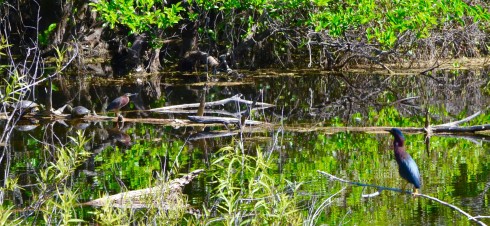
Afterwords I take the obligatory alligator photo.
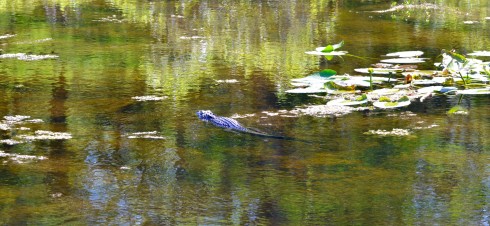
Also at Wood Duck Pond are an abundance of wasps collecting nectar I presume, from the weird shaped flowers of the button bush.
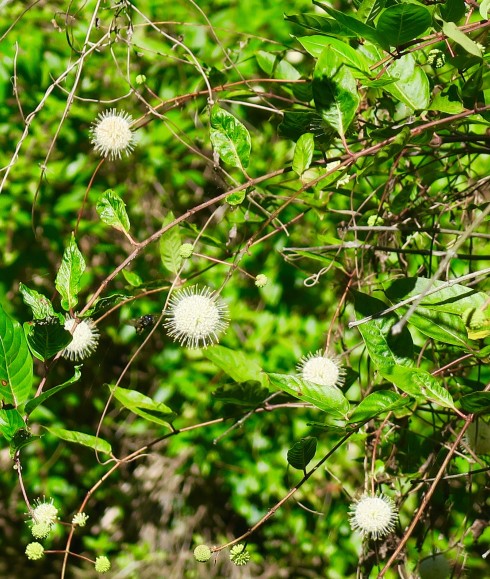
The next stop is Otter Pond where the water is perfectly still and the reflections are hard to tell from the real things.
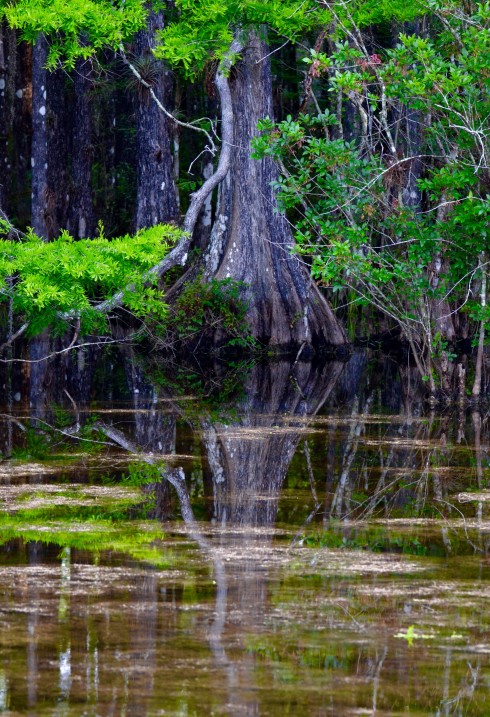
That turtle looks like it’s about to be snapped down on by two great tree jaws.
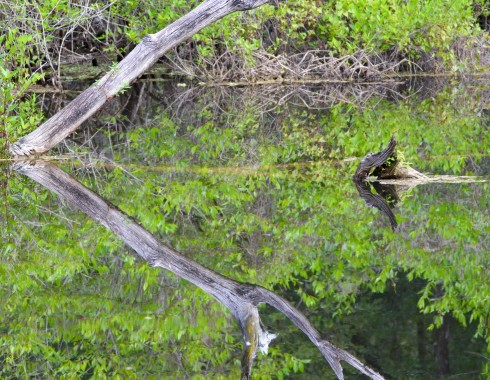
Walking further along away from the pond the reflections in the shallow water are almost impressionistic. This could be a Monet.
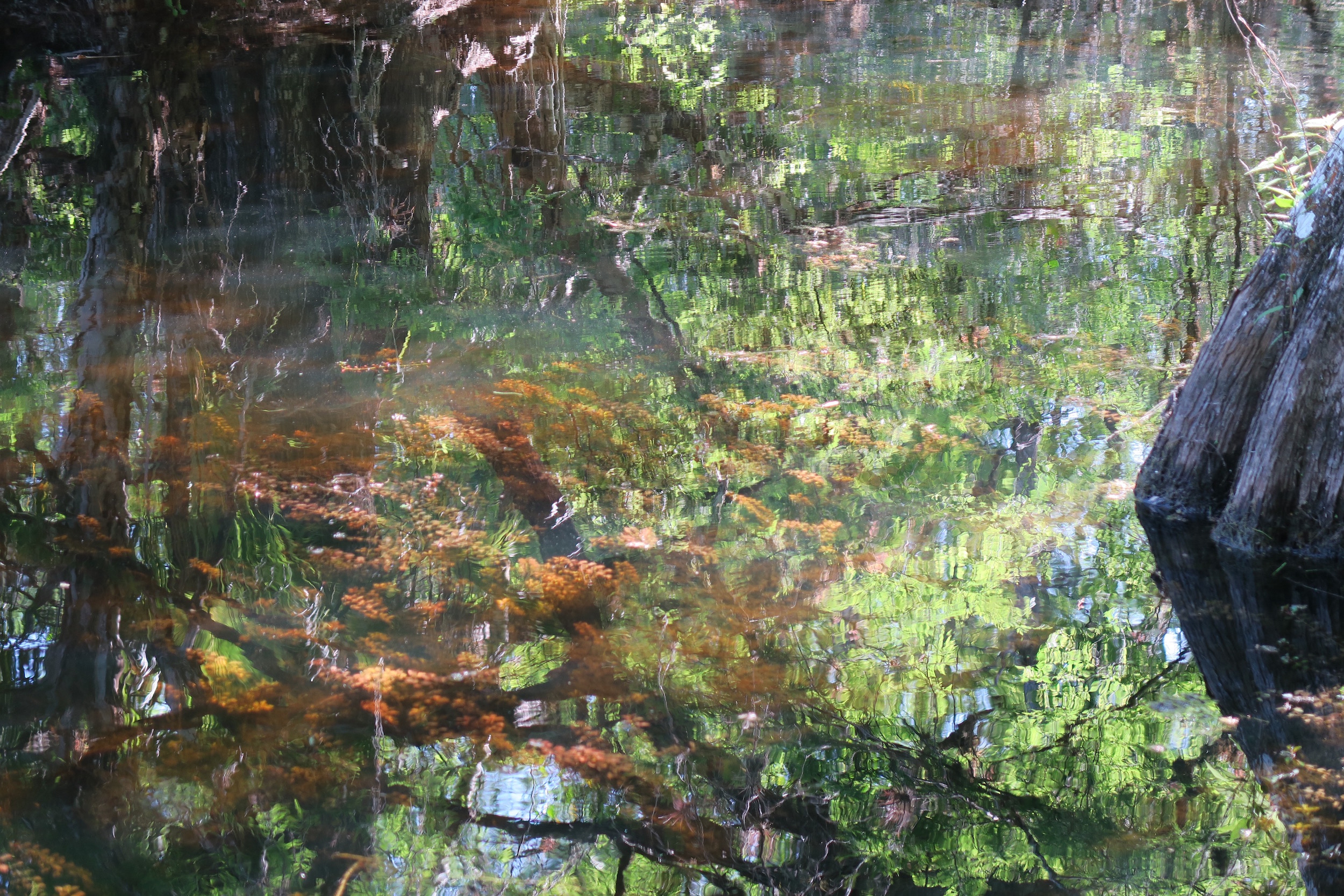
Since that first visit we have returned to Six Mile Cypress many times and like Corkscrew, every visit is different.

